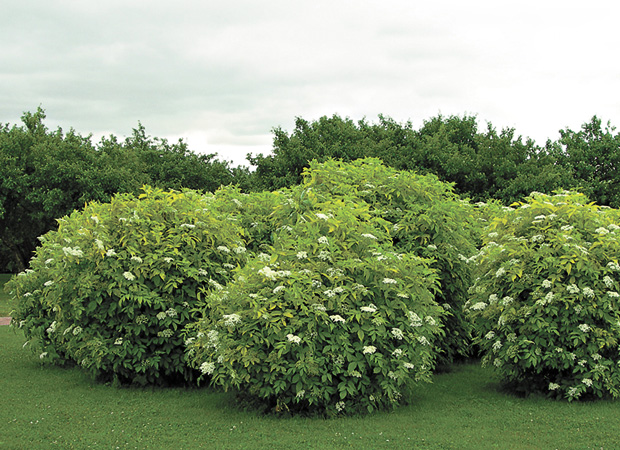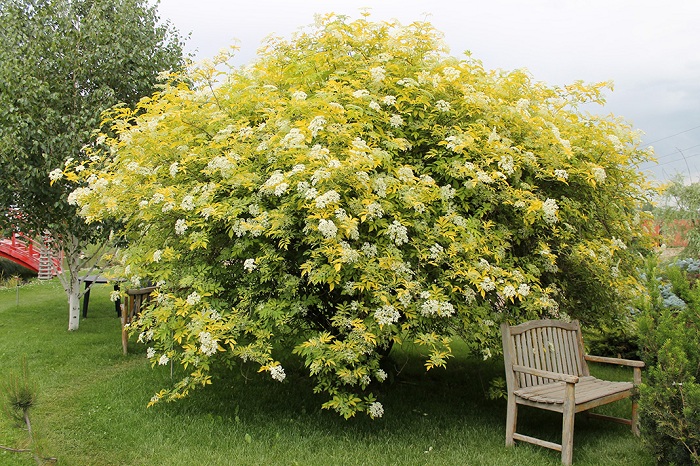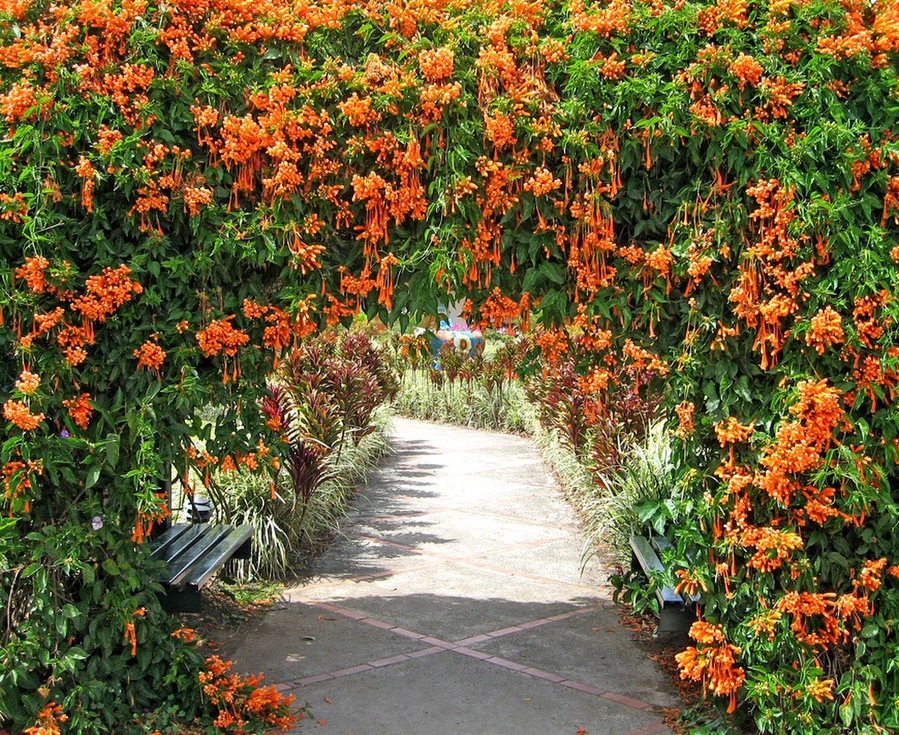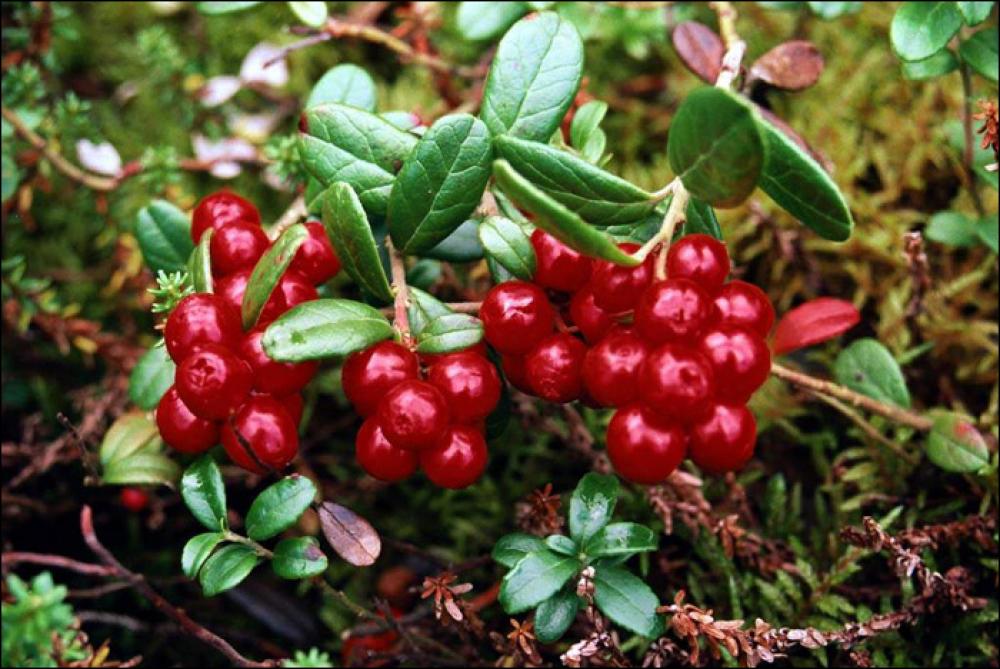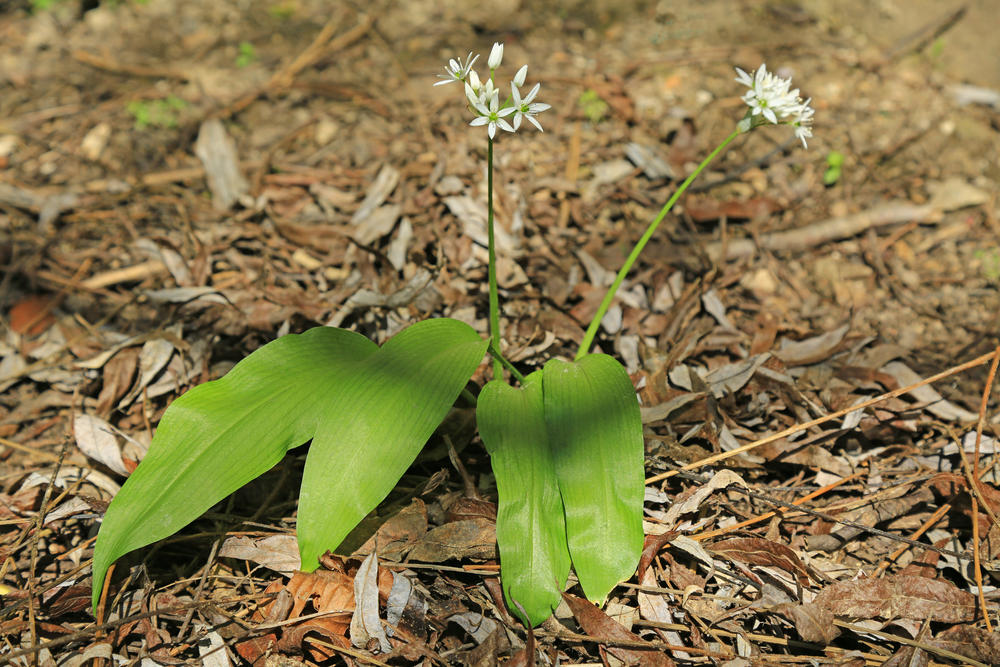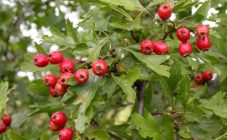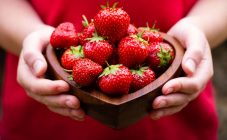Content:
Elderberry is a flowering plant from the Adoksov family. Previously, the genus was part of the Honeysuckle family. There are no more than 40 species in the genus. Some of them are considered medicinal, others are decorative.
Elderberry varieties, their features and a brief description
Elderberry (sambucus) grows everywhere in Europe and Asia, Australia, northern Africa. In Russia, its varieties are most often found in the southeastern regions. Small shrubs can be seen in forest clearings, under trees, and along roads. Usually it is a small tree with a height of about 2 m, but sometimes there are specimens, the tops of which reach 10 m. There is a herbaceous elder, bushes.
In Russia, elderberry species are not so diverse. In total, about 10 of them are cultivated. But there are many different varieties, forms and names, including:
- Elderberry red... Original f. ornata, with strongly pronounced openwork leaves and f. tenuifolia, with filamentous purple leaves;
- Elderberry variegated - Canadian elder, f. argenteomarginata, with a silvery border;
- Elderberry golden, belongs to the black type. Height no more than 2.5 m. In winter, it freezes over the height of the snow cover. In March, it is necessary to prune, leaving only a stump of about 7 cm, which stimulates the abundant growth of branches. Light green leaves bloom at the beginning of May, and then acquire a golden hue, which lasts until the very leaf fall. If planted in the shade, then the entire summer period retains the green color of the leaves;
- Elderberry yellow-leaved - Aurea (with golden or lime leaves), Luteovariegata (gold-colored leaves in the spring, and later whitish-yellow).
Elderberry dissected black laciniata often grows in the gardens. It is a shrub or woody plant, with thin branches and a distinct main trunk. Young stems are green, but over time, their color begins to change and turns gray. They are covered with small scales. The leaf consists of unpaired leaves, serrated along the edges, its length is about 30 cm. The plant blooms in the last decade of May. The flat inflorescences, which are more than 20 cm in diameter, consist of small flowers with a strong aroma. The fruits ripen at the end of August.
Agrotechnical methods of cultivation and care
Plants are usually placed in the sun, in humid places; in severe winters, they can freeze slightly. Agricultural engineering rules are simple:
- if the seedling is later formed in the form of a tree, then it is immediately tied to a support. For the winter, the trunk is insulated with a covering material. In the spring, if the soil in the hole is dry, it is watered. The root shoots are removed;
- the soil under the bush is mulched annually, a layer of compost or manure is laid, thereby providing additional nutrients;
- during the first three years, the soil around the bush must be weeded regularly;
- mineral fertilizers are applied together with water when development slows down;
- obligatory sanitary pruning in spring - removal of damaged and dried branches.
Advantages and disadvantages of certain types
The disadvantages of black varieties include a pronounced dependence on watering in dry seasons, while other species do not need it.
The Black lace variety has high decorative properties. Carved, dissected purple leaves turn crimson in autumn.
Unlike black, red elderberries are poisonous.
Elderberry as a garden decoration
Due to its high decorative qualities, elderberry is often used in landscape design. Elderberry looks great Black lace (Black lace), openwork, dark purple foliage and pink inflorescences with lemon scent will decorate any yard or garden area.
Red elderberry has been used in landscape design for a long time. It is also called an elder racemose, because of the particularly bright, almost scarlet ripening berries. The species is hardy and fast-growing. Any type of soil is suitable for it. Not demanding to care. Does not depend on the degree of illumination. A well-known honey plant. Looks spectacular in decorative compositions of squares and parks. They are planted along the banks of reservoirs in order to strengthen the soil. They also use decorative variegated elderberry (variegated) - varieties Marginata, Madonna.
Separately, we should mention the elder Siebold, which grows in Japan, the Kuriles and Sakhalin, has medicinal properties. An infusion of leaves and wood is actively used in folk medicine as a diaphoretic and diuretic. For the treatment of rheumatism, bruises and wounds, bark and flowers are insisted. The flowers are known for their antibacterial properties and have a laxative effect. The smell repels various garden pests, including mice and even flies. Inflorescences are hemispherical. Fruits appear in the 7th year after planting.
The heat-loving elderberry Eva is planted in areas where it is necessary to create or form a landscape. Height up to 3 m. It blooms in May, umbrellas are large, pink. The property that its crown easily tolerates pruning and quickly becomes lush makes the choice of this variety optimal.
Elderberry has a beautiful color, is widely used in medicine, it makes good jams and compotes. The main thing is not to confuse edible species with poisonous ones.
